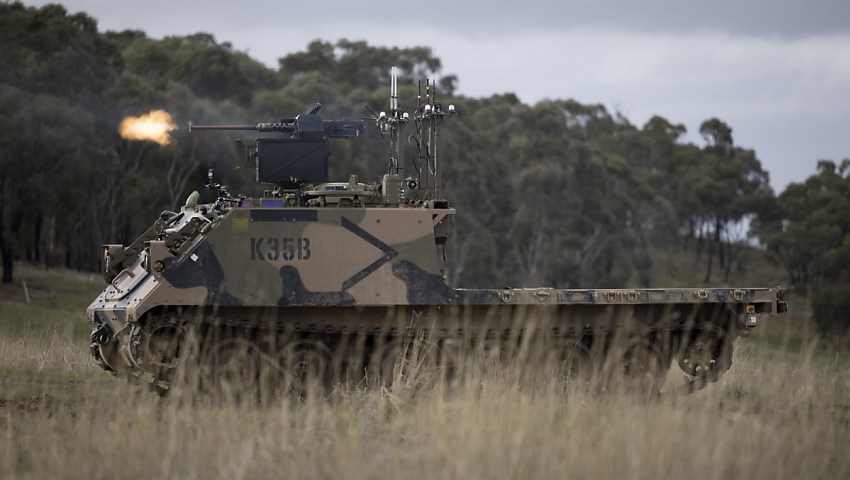The Australian Army has confirmed a technological leap with the firing of a remote weapon system from a remote-controlled vehicle for the first time.
To continue reading the rest of this article, please log in.
Create free account to get unlimited news articles and more!
The Australian Defence Force was able to fire a remote weapon system from an Australian Army M113AS4 armoured logistics vehicle during human-machine team exercise at Puckapunyal Military Area, Victoria, on 7 June this year.
The exercise was conducted by the Australian Army’s Robotic and Autonomous Systems Implementation and Coordination Office (RICO) with plans to converge several emerging technology projects into a simulated future warfare environment.
During the first Land Autonomous Systems and Teaming demonstration, RICO was able to operate drones, robots, and optionally crewed combat vehicles fitted with remote weapon systems within a conventional combined arms team to defeat a simulated enemy.
Two airborne drone groups were used for real-time surveillance and communications jamming against a simulated enemy position before engagement by enhanced M113AS4s optionally crewed combat vehicles and a third wave of armed (simulated) drones from above. Using image recognition and context awareness, drones would then identify dead, injured, and surrendering enemy personnel while supported by tanks.
It’s understood the technology used in the exercise included W&E Platt’s Remotely Operated Weapons Platform and Electro Optic Systems’ R400 MK2 remote weapon system.
RICO director Colonel Robin Smith said his organisation helps Army stay ahead of the game so soldiers and Australia aren’t exposed to a more capable adversary.
“With the rate of innovation that’s going on across the world, we need to understand both how to use and protect against these technologies,” COL Smith said.
“We want Army to have that asymmetric advantage.”
It’s hoped the achievement will allow development of an armoured combined arms team for the Australian Army to reduce risk to soldiers.
Technologies demonstrated during the exercise included group UAS for surveillance, electronic attacks and simulated strikes, robotic quadrupeds executing battlefield clearance tasks, optionally crewed combat vehicles providing support fire, and autonomous leader-follower convoys completing battlefield resupply tasks.
COL Smith also emphasised the significance of one skill set, quantum technology, which has implications for communications, cryptography, computing, simulation, sensing and imaging.
“There’s an incredible amount of potential in that range of technologies, with its true potential still to be discovered and understood, but we’re certainly moving towards that,” Colonel Smith said.
“We’re pursuing this idea of successful failure. There’s no progress without it.”
RICO, in partnership with academia, has reportedly used advanced quantum sensors to detect trains over 70 metres underground with systems the size of a notebook.
RICO is also proposing a prototype electric protected mobility vehicle which is undergoing review and was deployed on Exercise Talisman Sabre. The electric motor has a reduced heat and sound signature, increased acceleration and agility with lower required mechanical part requirements.
Autonomous leader-follower trucks driving in convoy have previously been demonstrated on public roads in June for the first time.
COL Smith said the aim was to converge several RICO projects into a simulated future warfare environment.
“The most powerful way of operating autonomy is as a human-machine team,” he said.
“We wanted to see how humans and intelligent machines can work together.”

 Login
Login







